Engineering & Design
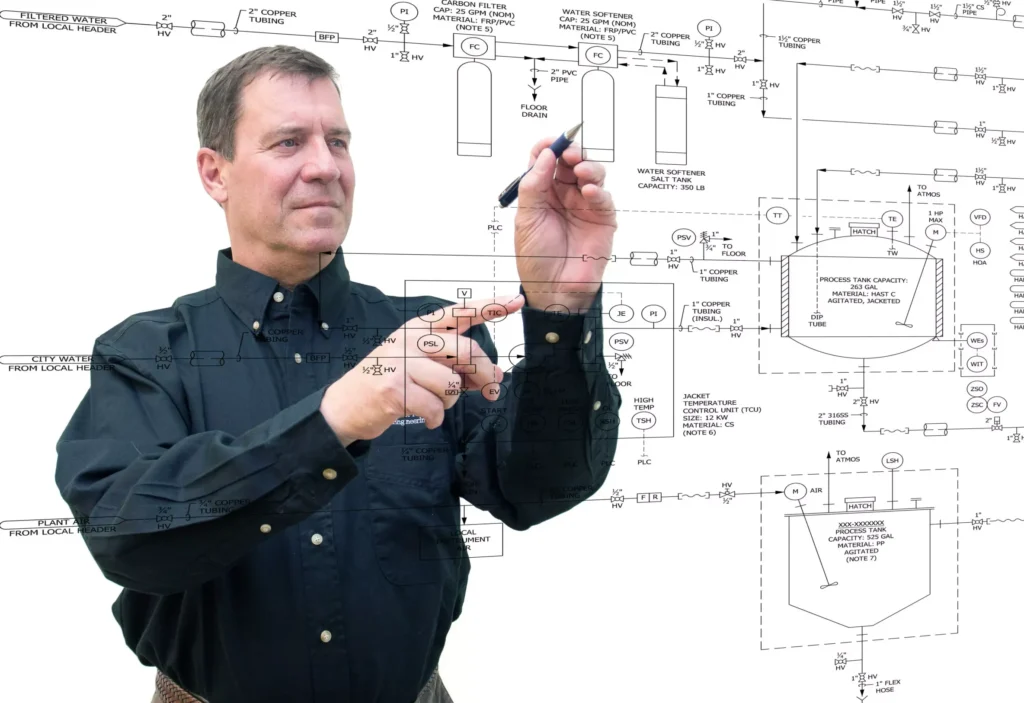
Projects & Maintenance Services of Illinois was incorporated in February of 2008 by husband and wife team Bill and Rose Murry. Bill is certified in welding inspection and is a Certified Plant Maintenance Manager. He has 45 years of welding experience and 33 years plant maintenance experience.
Engineering & Design
At Progressive Design, we provide solutions for complex situations customized to our client’s needs. We successfully execute challenging projects others shy away from.
We begin a project with our client’s end goals in mind. We understand the Complete Project Lifecycle from FEL / Gate Process, Initiation & Conception through Start-up & Commissioning into Steady State Operations, Upgrades & Modifications through Decommissioning & Disposal. Defining the Scope, understanding the Schedule, and working within the Budget is paramount to the success of a project.
We set the standard for Engineering excellence!
Performance targets:
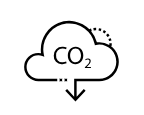
Improved sustainability
Long-lasting, high-performing liners designed with sustainability and safety as top priorities
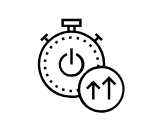
Increased uptime
Shorter and fewer maintenance stops

Lower maintenance costs
Reduced cost of operation, quick and easy maintenance
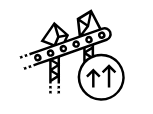
Optimized throughput
Maximized yearly production
Every mill is unique! Experience from over 8,000 mills worldwide, combined with the market’s most comprehensive offering, means that we can select the optimal mill lining solution for your specific mill.
Process / Mechanical Engineering
Process Engineering
- Process Improvement & Debottlenecking
- Piping & Instrumentation Diagrams (P&ID)
- Process Flow Diagrams (PFD
- Engineering Flow Diagrams (EFD)
- Utility Flow Diagrams (UFD)
- Air Flow Diagrams (AFD)
- Mass & Energy Balance (MEB)
- Heat & Material Balance (HMB)
- Process Safety Information (PSI)
- Standard Operating Procedures (SOP)
- Management of Change (MOC)
- Relief Systems Information (Code Requirements, Calculations, Sizing and System Design)
- Code / Compliance Analysis
- Technical Reports
- Hazard Analysis (PHA/DHA)
- Hazard Identification
- Risk Assessment
- Risk Management
- Program (RMP)
- Process Safety Management (PSM) / Inherently Safer Design
- Safety Integrity Level (SIL) Selection Analysis
- Engineering Data Sheets
- Process Equipment – Size / Specify: Pumps, tanks, heat exchangers, chillers, condensers, mixers, distillation, and absorption columns, etc.
- Piping Systems – Specification / Design
- Detailed Scopes of Work
- Fluid Mechanics, Mass and Heat Transfer, and Thermodynamics
Mechanical Engineering
- Process Improvement & Debottlenecking
- Piping & Instrumentation Diagrams (P&ID)
- Process Flow Diagrams (PFD
- Engineering Flow Diagrams (EFD)
- Utility Flow Diagrams (UFD)
- Air Flow Diagrams (AFD)
- Mass & Energy Balance (MEB)
- Heat & Material Balance (HMB)
- Process Safety Information (PSI)
- Standard Operating Procedures (SOP)
- Management of Change (MOC)
- Relief Systems Information (Code Requirements, Calculations, Sizing and System Design)
- Code / Compliance Analysis
- Technical Reports
- Hazard Analysis (PHA/DHA)
- Hazard Identification
- Risk Assessment
- Risk Management
- Program (RMP)
- Process Safety Management (PSM) / Inherently Safer Design
- Safety Integrity Level (SIL) Selection Analysis
- Engineering Data Sheets
- Process Equipment – Size / Specify: Pumps, tanks, heat exchangers, chillers, condensers, mixers, distillation, and absorption columns, etc.
- Piping Systems – Specification / Design
- Detailed Scopes of Work
- Fluid Mechanics, Mass and Heat Transfer, and Thermodynamics
Electrical Engineering
Power
- Process Improvement & Debottlenecking
- Piping & Instrumentation Diagrams (P&ID)
- Process Flow Diagrams (PFD
- Engineering Flow Diagrams (EFD)
- Utility Flow Diagrams (UFD)
- Air Flow Diagrams (AFD)
- Mass & Energy Balance (MEB)
- Heat & Material Balance (HMB)
- Process Safety Information (PSI)
- Standard Operating Procedures (SOP)
- Management of Change (MOC)
- Relief Systems Information (Code Requirements, Calculations, Sizing and System Design)
- Code / Compliance Analysis
- Technical Reports
- Hazard Analysis (PHA/DHA)
- Hazard Identification
- Risk Assessment
- Risk Management
- Program (RMP)
- Process Safety Management (PSM) / Inherently Safer Design
- Safety Integrity Level (SIL) Selection Analysis
- Engineering Data Sheets
- Process Equipment – Size / Specify: Pumps, tanks, heat exchangers, chillers, condensers, mixers, distillation, and absorption columns, etc.
- Piping Systems – Specification / Design
- Detailed Scopes of Work
- Fluid Mechanics, Mass and Heat Transfer, and Thermodynamics
Controls
- Process Improvement & Debottlenecking
- Piping & Instrumentation Diagrams (P&ID)
- Process Flow Diagrams (PFD
- Engineering Flow Diagrams (EFD)
- Utility Flow Diagrams (UFD)
- Air Flow Diagrams (AFD)
- Mass & Energy Balance (MEB)
- Heat & Material Balance (HMB)
- Process Safety Information (PSI)
- Standard Operating Procedures (SOP)
- Management of Change (MOC)
- Relief Systems Information (Code Requirements, Calculations, Sizing and System Design)
- Code / Compliance Analysis
- Technical Reports
- Hazard Analysis (PHA/DHA)
- Hazard Identification
- Risk Assessment
- Risk Management
- Program (RMP)
- Process Safety Management (PSM) / Inherently Safer Design
- Safety Integrity Level (SIL) Selection Analysis
- Engineering Data Sheets
- Process Equipment – Size / Specify: Pumps, tanks, heat exchangers, chillers, condensers, mixers, distillation, and absorption columns, etc.
- Piping Systems – Specification / Design
- Detailed Scopes of Work
- Fluid Mechanics, Mass and Heat Transfer, and Thermodynamics
Instrumentation
- Process Improvement & Debottlenecking
- Piping & Instrumentation Diagrams (P&ID)
- Process Flow Diagrams (PFD
- Engineering Flow Diagrams (EFD)
- Utility Flow Diagrams (UFD)
- Air Flow Diagrams (AFD)
- Mass & Energy Balance (MEB)
- Heat & Material Balance (HMB)
- Process Safety Information (PSI)
- Standard Operating Procedures (SOP)
- Management of Change (MOC)
- Relief Systems Information (Code Requirements, Calculations, Sizing and System Design)
- Code / Compliance Analysis
- Technical Reports
- Hazard Analysis (PHA/DHA)
- Hazard Identification
- Risk Assessment
- Risk Management
- Program (RMP)
- Process Safety Management (PSM) / Inherently Safer Design
- Safety Integrity Level (SIL) Selection Analysis
- Engineering Data Sheets
- Process Equipment – Size / Specify: Pumps, tanks, heat exchangers, chillers, condensers, mixers, distillation, and absorption columns, etc.
- Piping Systems – Specification / Design
- Detailed Scopes of Work
- Fluid Mechanics, Mass and Heat Transfer, and Thermodynamics
Civil / Structural Engineering
Civil / Structural Engineering
- Process Improvement & Debottlenecking
- Piping & Instrumentation Diagrams (P&ID)
- Process Flow Diagrams (PFD
- Engineering Flow Diagrams (EFD)
- Utility Flow Diagrams (UFD)
- Air Flow Diagrams (AFD)
- Mass & Energy Balance (MEB)
- Heat & Material Balance (HMB)
- Process Safety Information (PSI)
- Standard Operating Procedures (SOP)
- Management of Change (MOC)
- Relief Systems Information (Code Requirements, Calculations, Sizing and System Design)
- Code / Compliance Analysis
- Technical Reports
- Hazard Analysis (PHA/DHA)
- Hazard Identification
- Risk Assessment
- Risk Management
- Program (RMP)
- Process Safety Management (PSM) / Inherently Safer Design
- Safety Integrity Level (SIL) Selection Analysis
- Engineering Data Sheets
- Process Equipment – Size / Specify: Pumps, tanks, heat exchangers, chillers, condensers, mixers, distillation, and absorption columns, etc.
- Piping Systems – Specification / Design
- Detailed Scopes of Work
- Fluid Mechanics, Mass and Heat Transfer, and Thermodynamics
Architectural Services
- Process Improvement & Debottlenecking
- Piping & Instrumentation Diagrams (P&ID)
- Process Flow Diagrams (PFD
- Engineering Flow Diagrams (EFD)
- Utility Flow Diagrams (UFD)
- Air Flow Diagrams (AFD)
- Mass & Energy Balance (MEB)
- Heat & Material Balance (HMB)
- Process Safety Information (PSI)
- Standard Operating Procedures (SOP)
- Management of Change (MOC)
- Relief Systems Information (Code Requirements, Calculations, Sizing and System Design)
- Code / Compliance Analysis
- Technical Reports
- Hazard Analysis (PHA/DHA)
- Hazard Identification
- Risk Assessment
- Risk Management
- Program (RMP)
- Process Safety Management (PSM) / Inherently Safer Design
- Safety Integrity Level (SIL) Selection Analysis
- Engineering Data Sheets
- Process Equipment – Size / Specify: Pumps, tanks, heat exchangers, chillers, condensers, mixers, distillation, and absorption columns, etc.
- Piping Systems – Specification / Design
- Detailed Scopes of Work
- Fluid Mechanics, Mass and Heat Transfer, and Thermodynamics
Additional Services
Project Management
- Process Improvement & Debottlenecking
- Piping & Instrumentation Diagrams (P&ID)
- Process Flow Diagrams (PFD
- Engineering Flow Diagrams (EFD)
- Utility Flow Diagrams (UFD)
- Air Flow Diagrams (AFD)
- Mass & Energy Balance (MEB)
- Heat & Material Balance (HMB)
- Process Safety Information (PSI)
- Standard Operating Procedures (SOP)
- Management of Change (MOC)
- Relief Systems Information (Code Requirements, Calculations, Sizing and System Design)
- Code / Compliance Analysis
- Technical Reports
- Hazard Analysis (PHA/DHA)
- Hazard Identification
- Risk Assessment
- Risk Management
- Program (RMP)
- Process Safety Management (PSM) / Inherently Safer Design
- Safety Integrity Level (SIL) Selection Analysis
- Engineering Data Sheets
- Process Equipment – Size / Specify: Pumps, tanks, heat exchangers, chillers, condensers, mixers, distillation, and absorption columns, etc.
- Piping Systems – Specification / Design
- Detailed Scopes of Work
- Fluid Mechanics, Mass and Heat Transfer, and Thermodynamics
Commissioning & Start-up Support
- Process Improvement & Debottlenecking
- Piping & Instrumentation Diagrams (P&ID)
- Process Flow Diagrams (PFD
- Engineering Flow Diagrams (EFD)
- Utility Flow Diagrams (UFD)
- Air Flow Diagrams (AFD)
- Mass & Energy Balance (MEB)
- Heat & Material Balance (HMB)
- Process Safety Information (PSI)
- Standard Operating Procedures (SOP)
- Management of Change (MOC)
- Relief Systems Information (Code Requirements, Calculations, Sizing and System Design)
- Code / Compliance Analysis
- Technical Reports
- Hazard Analysis (PHA/DHA)
- Hazard Identification
- Risk Assessment
- Risk Management
- Program (RMP)
- Process Safety Management (PSM) / Inherently Safer Design
- Safety Integrity Level (SIL) Selection Analysis
- Engineering Data Sheets
- Process Equipment – Size / Specify: Pumps, tanks, heat exchangers, chillers, condensers, mixers, distillation, and absorption columns, etc.
- Piping Systems – Specification / Design
- Detailed Scopes of Work
- Fluid Mechanics, Mass and Heat Transfer, and Thermodynamics
Construction Management
- Process Improvement & Debottlenecking
- Piping & Instrumentation Diagrams (P&ID)
- Process Flow Diagrams (PFD
- Engineering Flow Diagrams (EFD)
- Utility Flow Diagrams (UFD)
- Air Flow Diagrams (AFD)
- Mass & Energy Balance (MEB)
- Heat & Material Balance (HMB)
- Process Safety Information (PSI)
- Standard Operating Procedures (SOP)
- Management of Change (MOC)
- Relief Systems Information (Code Requirements, Calculations, Sizing and System Design)
- Code / Compliance Analysis
- Technical Reports
- Hazard Analysis (PHA/DHA)
- Hazard Identification
- Risk Assessment
- Risk Management
- Program (RMP)
- Process Safety Management (PSM) / Inherently Safer Design
- Safety Integrity Level (SIL) Selection Analysis
- Engineering Data Sheets
- Process Equipment – Size / Specify: Pumps, tanks, heat exchangers, chillers, condensers, mixers, distillation, and absorption columns, etc.
- Piping Systems – Specification / Design
- Detailed Scopes of Work
- Fluid Mechanics, Mass and Heat Transfer, and Thermodynamics
Reliability excellence Welding
Our skilled workforce, established processes and innovative, data-driven technologies combine to help you meet your unique business needs. Whether you lack skilled workers with advanced training or are not currently operating at peak productivity, you can count on our mill maintenance solutions to help your reliability soar.
- Projects & Maintenance Services
- Zero accident goal
- productive manner without accident
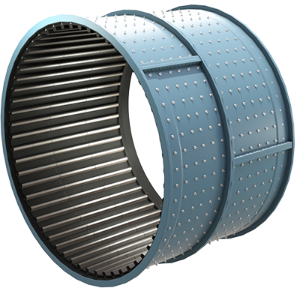
Head linings
As part of a system solution, the head lining is designed with consideration to the shell lining design. All components must be in balance to minimize the number of maintenance stops.
We keep the number of individual parts to a minimum and to ensure that parts do not interfere with each other during installation. Liners that are most subject to wear are made more robust, and whenever possible these high wear parts are designed to be independently replaceable.

Shell linings
The shell lining has a major influence on grinding efficiency. It transforms the mill rotation into charge motion and both profile and spacing must be carefully selected to suit each specific mill.
When designing a shell lining, Metso considers the type of grinding, mill size and speed, maintenance schedules, safety, impact levels, efficient use of materials, and many other parameters.
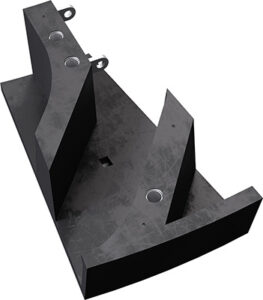
Discharge systems
Metso’s wear-resistant rubber-covered or cast dischargers come in two general designs – radial and curved. The larger the mill, the longer the distance the material must travel before being discharged into the trunnion.
A curved discharger design will initiate a flow towards the center of the mill at an earlier stage and ensure that the discharger pan is emptied and ready to be refilled during the next pass through the charge. Prompt removal of material and less backflow will allow the energy to be more efficiently utilized for grinding fresh ore. As less material is recirculated, wear life increases. In addition, increased flow can also contribute to increased throughput and decreased power consumption.
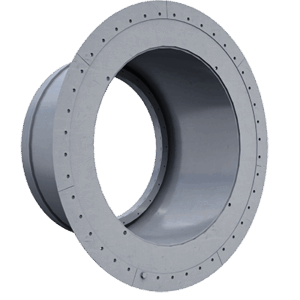
Trunnion linings
Metso trunnion liners are custom-made to protect your mill trunnions from internal wear. Fit is critical, and our trunnion liners can be made to almost any size or shape.
Typical design features include internal spirals or dams to control material flow, flanges for the mounting of trommel screens, the inclusion of threaded holes for jacking screws, inspection ports, etc. Metso trunnion liners are grouped into three categories; One-Piece, Replaceable Sleeve, and Bolted Wear Elements.

Mill trommel screens
Mill trommels, whether used for sizing or scalping, play a vital role in your grinding circuit. Metso’s robust but light-weight trommel frames consist of carefully selected welded profiles that are covered in a protective layer of wear-resistant rubber or polyurethane. Adapting flanges, if required are available to suit the design of virtually any trunnion or trunnion liner interface.
There are two main types of screen panels – modular and customized. The modular trommel panel with snap-on attachment comes in a standard size of 305 x 610 mm. Installation and replacement of the snap-on screen panels is easily accomplished and results in minimal if any impact on mill availability.
Join Our Team
We are always looking for passionate, talented, and creative people to join our team.